The Confessions of a Caricaturist, Vol. 1, Harry Furniss [digital book reader txt] 📗
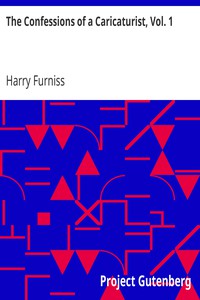
- Author: Harry Furniss
Book online «The Confessions of a Caricaturist, Vol. 1, Harry Furniss [digital book reader txt] 📗». Author Harry Furniss
What indeed after this? Except in despair we adopt the child's well-known definition—"First you think, and then you draw round the think." I have been more than once asked to deliver a lecture explaining the process. Of course such an idea is too absurd for serious consideration. The comic writer cannot give anyone a recipe for making jokes, nor can a comic actor show you how to grimace so as to make others laugh in this serious country. We are not taught to look at the comic side of things—any humorous element may grow, like Topsy, unaided—nor is the power given to many to explain to others their inventions. Bessemer, the inventor of the steel bearing his name, when he first made his discovery was asked to read a paper explaining his invention to a large meeting of experts. He had his carefully-prepared notes in front of him, but they only embarrassed him. He struggled to speak, but failed. Only the weight of the lumps of metal dangling in his coattail pocket kept him from collapsing. Suddenly he dived his hand into the pocket and produced a piece of steel, which he thumped on the table. "Bother the paper! Here is my steel, and I'll tell you how I made it!" So would it be with a caricaturist. After a struggle he would say, "Bother words, [Pg 134] words, words! Here is a pencil, and here is some paper. I'll show you how I caricature."
 CARICATURE OF ME BY MY DAUGHTER, AGE 15.
CARICATURE OF ME BY MY DAUGHTER, AGE 15.
Personally, I have no objection to being caricatured—I frequently make caricatures of myself. Nor have I any objection to being interviewed—I interview myself. What else are these pages but interviews? I confess I fail to see any objection to a legitimate caricature or a legitimate interview. On the contrary, I look upon interviewing by an experienced and sympathetic writer as invaluable to a public man who is bringing out something novel and of interest to the public at large. It certainly seems to me judicious that he should give his preliminary ideas regarding it to the public firsthand, instead of allowing them to leak out in an unauthentic and disfigured form through the fervid imaginations of irresponsible scribes, leading to much misconception.
But I do object to the incapable, be he an interviewer wielding the pencil or the pen. To illustrate my meaning I shall take the latter first. The pen in this case did his work in true professional style. He came to interview me, and by doing so to "boom" me for a journal which was about to make a feature of my contributions to its pages. He brought with him a new note-book of remarkable size; an artist with a portfolio, pencils, and other artistic necessities; and a [Pg 135] photographer! The interviewer shall describe the scene in his own words.
The interviewer remarked that the readers of the ——"would be very interested in knowing exactly how the thing (interviewing) was done. How did the ideas come? How did they take shape? And what was the method of work? Neither at these nor at any other questions did Mr. Furniss wince. It must not be forgotten that when he was in America last year he was interviewed, on an average, once a day; and a man who has passed through  A SERIOUS PORTRAIT—FROM LIFE. such an experience as that is unlikely to recoil before any ordinary ordeal; although Mr. Furniss was bound to admit that a combination of interviewer, artist, and photographer had never before got him into his grip. The situation would have had its ludicrous side for anybody who had chanced to peep through the skylight. The spectacle of five men (for the presence of the indefatigable secretary was an indispensable part of the proceedings) all solemnly drinking tea, while a deer-hound kept a wistful eye on the sugar-basin, was unusual, and perhaps a little grotesque—to all save the participants. Seated at his easel in the characteristic position represented in our sketch, Mr. Furniss would now and again ask permission to move his arm towards his cup of tea, and would then bend back to the make-belief work at which he was posing." There is a picture of interviewing! Everything so prepared, so studied, so well described to impress the subscribers of the enterprising journal. The photographer with a wide angle lens took in all that was in my studio—to "make-believe," as the camera [Pg 136] invariably does, that the apartment was six times larger than it really is. But the artist, who should idealise if the photographer could not, who so sadly interfered with my enjoying my tea, who was sent to make the most of me to raise the enthusiasm of the readers and to increase the subscriptions, succeeded in doing with his pencil what no interviewer has done with his pen,—he made me wince! Here is a reduction of the serious portrait published.
A SERIOUS PORTRAIT—FROM LIFE. such an experience as that is unlikely to recoil before any ordinary ordeal; although Mr. Furniss was bound to admit that a combination of interviewer, artist, and photographer had never before got him into his grip. The situation would have had its ludicrous side for anybody who had chanced to peep through the skylight. The spectacle of five men (for the presence of the indefatigable secretary was an indispensable part of the proceedings) all solemnly drinking tea, while a deer-hound kept a wistful eye on the sugar-basin, was unusual, and perhaps a little grotesque—to all save the participants. Seated at his easel in the characteristic position represented in our sketch, Mr. Furniss would now and again ask permission to move his arm towards his cup of tea, and would then bend back to the make-belief work at which he was posing." There is a picture of interviewing! Everything so prepared, so studied, so well described to impress the subscribers of the enterprising journal. The photographer with a wide angle lens took in all that was in my studio—to "make-believe," as the camera [Pg 136] invariably does, that the apartment was six times larger than it really is. But the artist, who should idealise if the photographer could not, who so sadly interfered with my enjoying my tea, who was sent to make the most of me to raise the enthusiasm of the readers and to increase the subscriptions, succeeded in doing with his pencil what no interviewer has done with his pen,—he made me wince! Here is a reduction of the serious portrait published.
I have sat down time after time to answer young correspondents' questions about the "system" to adopt for the production of caricature. I invariably end by drawing imaginary caricatures of my correspondent and fail to reply. When interviewed on the subject of caricature, I discourse on the history of the Pre-Raphaelite movement, and the technique in the work of Burne-Jones, Rossetti, and Holman Hunt, and caricature is therefore driven from our minds.
However, the difficulty was solved in a very unexpected manner. One day, whilst smoking my cigar after lunch, I overheard an interview in my studio, which I here reproduce.
A Pencil of mine was working away merrily shortly after the opening of the Session, when suddenly my favourite Pen flew off the writing-table, where it had been enjoying a quiet forty winks, and alighted on the easel.

ow very awkward you are!" cried the Pencil. "See, you have knocked against and so agitated me that I have actually given Sir William an extra chin."
"One more or less does not matter, does it?" rejoined the Pen. "I apologise, and trust you will make allowances for me, as I am only an artist's Pen, don't you know, and naturally rather uncouth, I fear."
[Pg 137]
"Pray take a seat upon the indiarubber, and let me know to what I am indebted for the honour of this visit."
"Well," continued the Pen, "I have flown over here to remind you of your promise to confess to me some of the secrets of caricature."
"Ah, yes," replied the Pencil, "I remember now. I have really been so busy sketching Members of Parliament at St. Stephen's, that I had almost forgotten my promise."
"A poor Pen is out of place in an artist's studio, except to minister to the requirements of the autograph hunter. Well, you need not be jealous. My literary flight is not intended to be a very high one after all. Now you know more about the secrets of the studio than I do; so tell me, is it the custom of H. F. to have a regular sitting for a caricature, after the fashion of the portrait painters?"
"Oh, you are too delightfully innocent altogether," laughed the Pencil, rubbing its leaden head rapidly on a piece of paper, to sharpen its point. "A regular sitting! What do you think? No, sir, no, emphatically never. Such an operation would be fatal to the delicate constitution of a caricature, and the result would not be worth the paper upon which it is drawn. It is only in ordinary portraiture that a sitting is required, and upon that point I have a theory."
"Oh, never mind your theories now, old fellow," rejoined the Pen, as it took a sip of ink and prepared to chronicle the reply. "What I want to chat to you about at present is how to catch a caricature."
The Pencil pricked up his ears, and with a knowing wink, said:
"Ah, I see! You want to know secrets. Well, I will tell you 'how it's done.' The great point about a caricature is that it must be caught unawares. A man when he thinks he is unobserved struts about gaily, just for all the world like a hedgehog. All his peculiarities are then as evident as your cousins the quills upon the back of the fretful porcupine. But the moment the man or woman who is about to be caricatured observes H. F. take me in hand, I always notice that he shrivels up and collapses as quickly as one of the insectivora surprised at his feast. But wait a moment: now you ask me, I do [Pg 138] recollect one unfortunate man who, despite H. F.'s protest, insisted upon coming here once to sit for a caricature. He looked the picture of misery, and sat in the chair there, just as if he were at a dentist's. H. F. made a most flattering portrait. Indeed, so much too handsome was it that I could hardly follow the workings of his fingers, I was laughing so."
"'Oh, what a relief!' cried the sitter, when H. F. showed him the drawing. 'You have certainly made a pretty guy of me, but, thank heaven, I am not thin-skinned.'
"'Only thick-headed,' muttered H. F. sotto voce to me as he continued to chat with the sitter.
"No sooner had he left the studio than the 'study' was in the fire, and the caricature which afterwards came from the Furniss was drawn entirely from memory.
"The artist is in more evil case when he has absolutely no chance whatever of making the slightest memorandum, for he must trust to memory alone," remarked the Pencil.
"Yet Pellegrini boasted that he always trusted to memory," said the Pen.
"I know he did," replied the Pencil, "and more than once chaffed H. F. for bringing me out. H. F., I know, has the greatest admiration for most of Pellegrini's work, but thinks that 'Ape' certainly had the failing common to all Italian caricaturists of being cruel rather than funny. I may mention too, here, an incident for the truth of which H. F. can vouch, and which illustrates another weakness of the inhabitants of the Sunny South. When the poor fellow was ill a friend of his one day set to work to put his room in order, and in moving a screen was surprised to find behind it a number of soiled shirts. He began to count them over with a view to sending them to the laundry, when Pellegrini starting up exclaimed, 'You fellow! you leave my shirts there, or I am a ruined man. Don't you see they are my "shtock in drade"?' And sure enough upon the huge familiar linen cuffs were numerous notes in pencil—sketches, in fact, from life for coming caricatures. Now, when H. F. intends to trust entirely to memory, I often find that he makes a note in writing after this fashion: 'Like So-and-so, [Pg 139] with a difference,'—and the difference is noted. Or 'Think of an animal, a bird, or a fish, and to that add So-and-so, and subtract So-and-so,' and this results in a portrait. For instance, if he saw a man like this, I should not be surprised by his writing a single word as 'Penguin' for his guidance, and so on."
 "PENGUIN."
"PENGUIN."
"The old caricaturists, I suppose, had a decided advantage over the moderns in having artistic costumes to depict?" asked the Pen.
"Of course," replied the Pencil. "Even up to the time of Seymour the tailor made the man, and was, therefore, largely responsible for the caricature. You have only to see Mr. Brown in the ordinary attire of to-day and also in Court dress to appreciate this, and sympathise with me."
 MR. BROWN, ORDINARY ATTIRE. COURT DRESS.
MR. BROWN, ORDINARY ATTIRE. COURT DRESS.
"Now here is another point," continued the Pen, "upon which you can throw some light, old fellow. I have often seen letters on the writing-table from people asking H. F. for his recipe for the making of caricatures. I invariably scribble the same reply, 'Find out the chief points and exaggerate them.' Not satisfied with this, some have asked him to explain his modus operandi." "I recollect an instance," replied the Pencil. "It was in the studio here. An interviewer called, and asked H. F. to explain the art of caricature. So he took down a volume of portraits from the book-shelves,
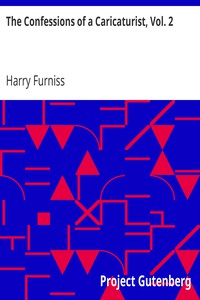

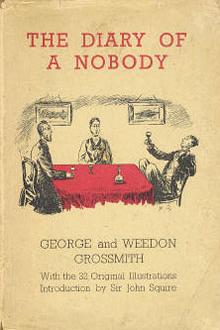
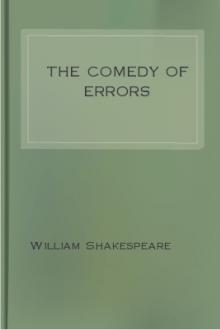
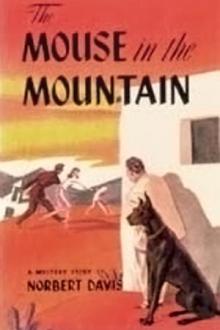
Comments (0)